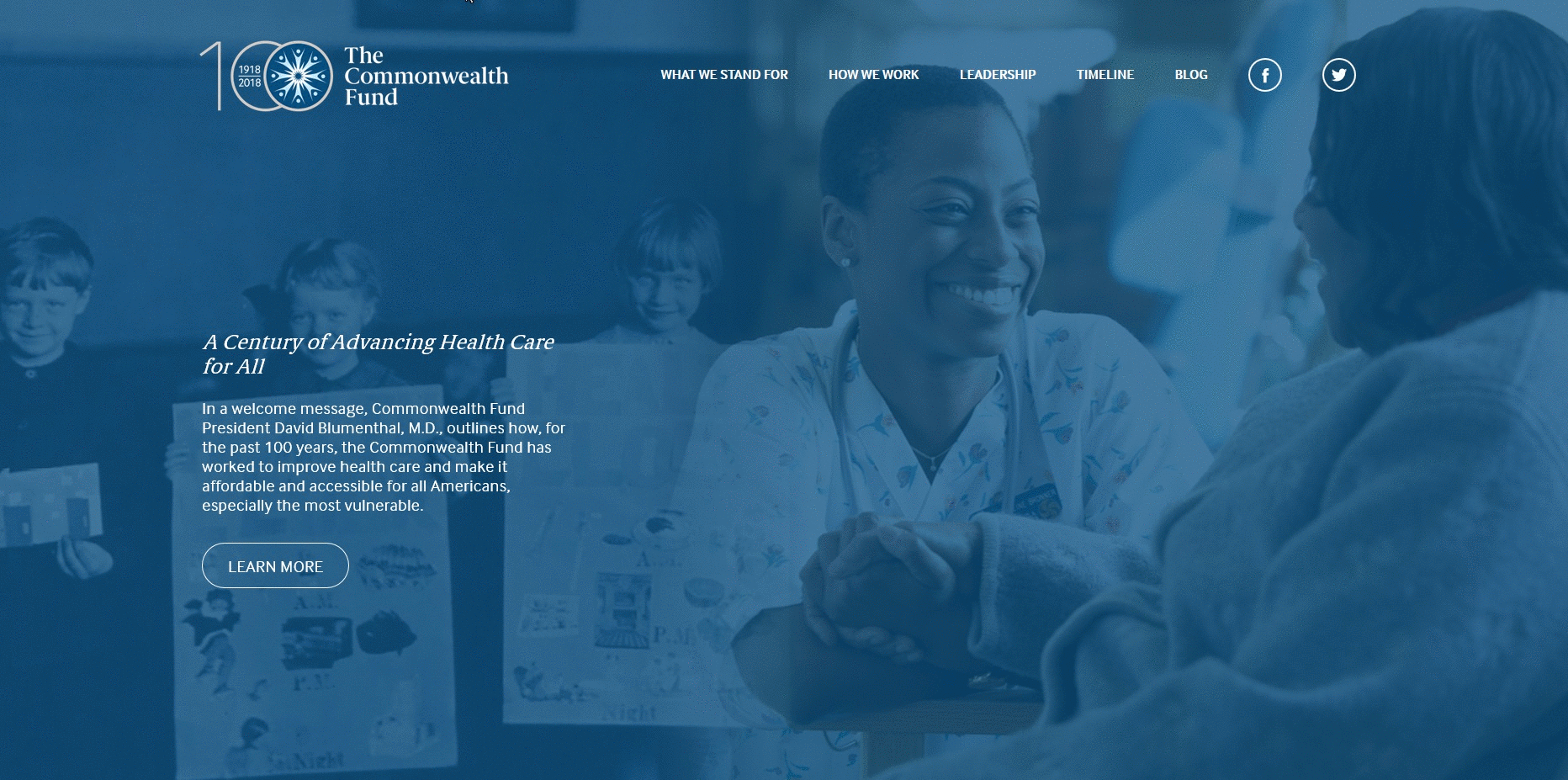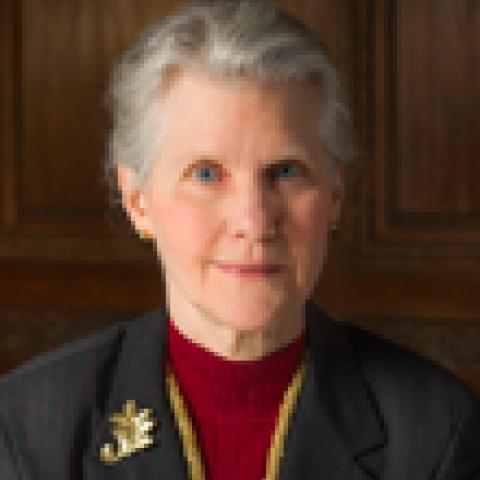Partnerships have been one of the key ways the Commonwealth Fund has worked over its 100 years to promote a high-performing health system. Some of our collaborations with other foundations, educational institutions, private industry, and government agencies have blossomed into ongoing movements, including the Healthy Steps for Young Children model of enhanced preventive care and the nation’s first nurse practitioner and physician assistant programs.
Advancing Excellence in America’s Nursing Homes
The Advancing Excellence in America’s Nursing Homes campaign is another example of a collaboration that spawned a movement. It grew out of the Commonwealth Fund’s Frail Elders Program (2002–2012), which focused on improving nursing home residents’ care and quality of life. Two realizations shaped the campaign. First, while nursing home regulatory efforts had established a floor for performance, this mostly punitive approach had not stimulated improvements beyond minimum standards. Second, there were some 15,000 nursing homes in the nation, and the industry had long resisted change. It became clear that if we were going to make a difference, it would have to be done by engaging nursing homes themselves.
Borrowing a page from the Institute for Healthcare Improvement’s 100,000 Lives Campaign, we built a broad-based, national coalition of stakeholders, including nursing home trade groups, professional associations, federal agencies, and consumer advocates. In 2006, the campaign was launched as a joint venture of the Fund and two dozen other organizations, each of which provided financial support and other resources. The Centers for Medicare and Medicaid Services (CMS) covered the cost of developing and maintaining a website. Following much discussion, the group arrived at consensus on the campaign’s purpose: “To pursue excellence in the quality of life and quality of care for the residents of America’s nursing homes by enhancing resident choice, strengthening workforce, and improving clinical outcomes.”
In keeping with this goal, the campaign focused on such clinical issues as pain management and reduction in use of physical restraints, but also sought to assess residents’ satisfaction and promote consistent assignment of nursing staff to residents to improve residents’ experiences. To join the campaign, nursing homes had to commit to sharing their performance data and setting improvement targets for at least three different goals.
Within a year of the campaign’s launch, more than 6,000 nursing homes — 40 percent of all facilities — had joined. In several states, all nursing homes signed up. After two years, publicly available performance data showed a “campaign effect” for several clinical indicators. That is, in the aggregate, nursing homes that selected a goal area to work on, such as reduction of physical restraints, and set an improvement target, improved further and faster than nursing homes not setting improvement targets.
This widespread impact was made possible by the campaign’s use of an organizational technique familiar to political campaigns: local networks. Local Area Networks of Excellence (LANEs) were created in nearly every state, bringing together trade associations, state quality improvement organizations, consumer groups, and others. The LANEs raised awareness of the campaign, enrolled facilities, convened local meetings, and acted as a relay point for information between the field and the national steering committee. Thus, beyond improving the performance of individual nursing homes, the campaign also built a potentially reusable national infrastructure on which to build reforms.
In 2016, CMS stepped forward to lead the campaign, which today — as the National Nursing Home Quality Improvement Campaign — continues to offer tools to improve the quality of care and quality of life for nursing home residents across the nation.
Six-Foundation Collaborative on High-Need Adults
One of the Commonwealth Fund’s current partnerships involves six foundations working to improve care for complex patients or those with physical and/or behavioral health problems and, often, unmet social needs. We are partnering with the John A. Hartford Foundation, Milbank Memorial Fund, Peterson Center on Healthcare, the Robert Wood Johnson Foundation, and The SCAN Foundation — not just by cofunding, but by building a joint platform for delivering best practices in the emerging field of complex care.
The goal of the six-foundation collaborative, launched in 2016, is that by 2020, 30 percent of health care organizations participating in value-based payment models will have adopted interventions for adults with complex needs that improve patients’ outcomes and reduce the overall costs of care.
Combined, the six foundations have invested nearly $20 million in some 30 projects, including The Better Care Playbook, developed with the Institute for Healthcare Improvement. While the Playbook began as a library of curated resources on promising approaches to caring for patients with complex needs, it is evolving into an even more practical resource that offers guidance to health system leaders, payers, and policymakers. The National Academy of Medicine has highlighted the Playbook as a resource for implementing evidence-based interventions that can improve care for high-need patients. The six foundations are now building learning communities for providers ready to try.
Fittingly, the collaborative is also supporting the National Center for Complex Health and Social Needs in an effort to promote partnerships among the clinicians, social service providers, researchers, public health officials, payers, and others involved in helping people with complex needs. The center will marshal evidence and convene leaders to create a blueprint outlining ways to coordinate efforts across the field of complex care.
This and other examples, past and present, of partnerships are a strong thread in the Commonwealth Fund’s 100-year history. They have shown us how to leverage the unique contributions of our partners to stretch budgets further and amplify our impact through collective action.



